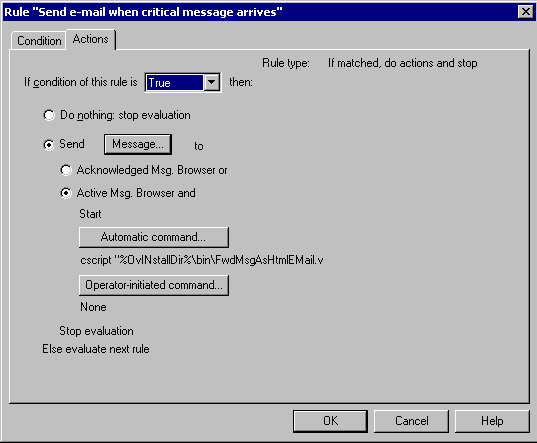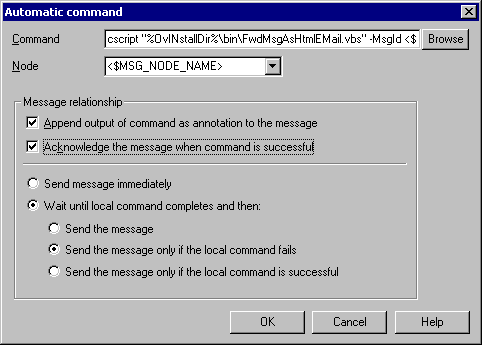From the WMI policy editor, select the Rules tab.
Select New to open the New Rule dialog box.
Select the Actions tab.

Configure a VB script. It gets the message ID as a parameter:
cscript.exe "%OvInstallDir%\bin\MyForwardingScript.vbs"
"<$WBEM:TargetInstance.Id>"
The following example shows the call of an executable which receives additional attributes of the message as parameters:
"C:\Program Files\Test\Forward.exe"
"<$WBEM:TargetInstance.Id>"
"<$WBEM:TargetInstance.Text>"
"<$WBEM:TargetInstance.Object>"
